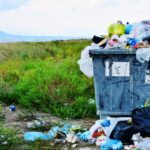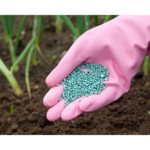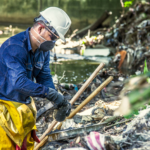
Regulatory and ethical framework for nanotechnology: the scientific community speaks out and organizes itself
The gap between the limited framework for nanotechnology and its widespread use has been the subject of several publications by scientists in recent weeks. An opportunity for AVICENN to take a look in the rear-view mirror at the efforts that have been made in terms of vigilance around nanos… and to call for a serious acceleration!
Two convergent and complementary publications were published at the end of September and the beginning of October, both calling for greater vigilance on nanos.
A North American point of view: “it’s hard to tell whether nanotechnology will make the world a better place“
The first one is an article published on September 25 in The Conversation by American biochemist Kristin Omberg: it summarizes the work she carried out with other researchers at the Pacific Northwest National Laboratory (PNNL), the results of which were published the previous year in the journal Health Security1The Promise of Emergent Nanobiotechnologies for In Vivo Applications and Implications for Safety and Security, Arnold AM at al., Health Security, 408-423, 2022.
While underlining the revolutionary potential of nanotechnologies in numerous fields (from medicine, to cosmetics, to textile or aeronautics), the researcher expresses the concern she and her team share about the limited scientific knowledge about the impact of nanotechnologies and nanomaterials.
Supervision of nanoparticles, which are capable of crossing physiological barriers and therefore likely to cause health, environmental and ethical problems, has not kept pace with the research and development of nanos. “As a chemist working in bioscience, I am worried by this limited oversight,” stresses Kristin Omberg, adding: “Without updated frameworks, it’s hard to tell whether nanotechnology will make the world a better place”.
For example, in the United States, nanoscale zinc oxide is considered “generally recognized as safe and effective“ by the Food and Drug Administration (FDA), based on evaluation of the substance on a larger, non-nano scale. Kristin Omberg warns of the potential consequences: “Hundreds of tons of nano-zinc oxide are produced each year, and it doesn’t degrade easily (…) – though increasing evidence suggests nano-zinc oxide from sunscreen is damaging coral reefs”. And this despite the fact that the European Consumer Safety Committee (ECCS) work on nano zinc oxide have led to a ban in UV aerosol filters in Europe.
A European point of view: “there are still problems to be solved”
The second publication, written by a team from the Technical University of Denmark (DTU) led by Steffen Hansen and published on October 10, 2023 in the journal NanoImpactEuropean2Nanomaterial legislation in the past 20 years – Closing the final gaps, Nielsen MB et al., NanoImpact, 2023takes a methodical, well-documented look at the progress made in regulating nanomaterials in Europe, and at what remains to be done. Almost twenty years after the first institutional reports by the Royal Society of the United Kingdom3Nanoscience and nanotechnologies; opportunities and uncertainties, UK Royal Society and Royal Academy of Engineering, 2004 and from the European Commission4Nanotechnologies: a Preliminary Risk Analysis, European Commission, 2004 which shed light on the health, environmental, ethical and societal implications of nanotechnology, the authors consider that over 90% of the recommendations made in 2004 have been more or less implemented, and call for a final push to close the loop. If the efforts made to date are to bear fruit, the Danish researchers believe that priority should now be given to :
- improved nano-metrology and nano-characterization,
- a harmonized definition of the term “nanomaterial”,
- limiting the release of nanomaterials
- and lastly, the monitoring and implementation of regulatory provisions specific to nanomaterials (labeling and identification of nanomaterials in cosmetics, food and biocides) and the revision of regulations that have not yet incorporated ad hoc provisions. to specifically regulate these substances, notably in the paint, textiles, toys, detergents, electronic equipment and waste sectors.
These guidelines are largely in line with the recommendations made by AVICENN since its creation and reiterated in our report on the tests we carried out on 23 everyday products published at the end of 2022!
Beyond the regulatory framework for nanotechnology, what about ethics?
On both sides of the Atlantic, concerns about the unique properties of nanoparticles, which are capable of crossing physiological barriers, remain paramount. The researchers point out that it is essential to develop international standards and regulations to guarantee the ethical and safe use of nanos on a global scale.
In particular, the American team stresses the urgent need tointegrate ethical considerations to guide nanoscience research, without which inequalities of access to the benefits of nanotechnology will increase, as will the equity and social justice issues of nanoparticle-enhanced human capabilities.
These words, written in 2023, are a distant echo of the work of the CNRS Ethics Committee in 20065Comité d’éthique du CNRS (COMETS), Avis sur les enjeux éthiques des nanosciences et nanotechnologies, October 2006 or the 2007 Comité Consultatif National d’Ethique 6National Consultative Ethics Committee for Life Sciences and Health, Ethical issues raised by nanosciences, nanotechnologies and health, February 2007. A “code of conduct for responsible nanosciences and nanotechnologies research” was even adopted at European level in 2008. Who remembers that today? Is it still being discussed – or even just displayed in nanoscience laboratories? The few researchers we interviewed all replied in the negative. This initiative, while commendable, attests to the poor effectiveness of top-down self-regulation initiatives, which are by definition non-binding… and almost inevitably doomed to end up, at best, in a drawer.
Over the past twenty years, R&D and the marketing of products containing nanomaterials have continued at a steady pace7See, for example, our product tests, from IKEA curtains to 23 everyday consumer products tested between 2020 and 2022. – even if the term “nano”, so common from 2009 to 20148Cf. Franz Seifert and Camilo Fautz, Hype after Hype: From Bio to Nano to AI, Nanoethics, 2021 has been progressively erased, with a few rare exceptions9The endangered term “nano” occasionally reappears, associated with ecological considerations.
– The CNRS press release on “Zinc oxide nanoparticle lasures for self-cleaning facades”, published on September 25, boasts a “better environmental record” (despite the risks associated with zinc oxide nanoparticles).
– An article in L’Usine Nouvelle, dated October 3, puts the spotlight on Sonsas, a company ready to “industrialize the production of greener nanoparticles”.. In the meantime, our products are being closely monitored by manufacturers anxious to avoid frightening their customers and/or attracting criticism from associations.
Two years ago, French researchers from the Laboratoire Réactions et Génie des Procédés (LRGP) of the CNRS also insisted on the need for vigilance regarding nanos, “if only to counter certain economic and even political players who might take advantage of the lack of knowledge about hazards to exploit new promises and, consequently, complicate the difficult task of toxicologists, who are generally poorly funded and in short supply”.10There’s no need to be afraid of “nano”, it’s just a poorly anticipated nanocrisis, Céline Frochot, Eric Schaer, Jean-Claude André, Environnement, Risques & Santé, 6:19, 2020.
For philosopher and science historian Bernadette Bensaude-Vincent, “it’s distressing to see how far we’ve come on these issues” : the author of the chapter “Ethics of nanotechnology” in the book Traité de bioéthique published in 2010, regrets that in 2023 “ethics still boils down to a few incantations and pious wishes”.
And now, in concrete terms, how do we move forward? Focus on two French initiatives
A number of recent initiatives, although relatively limited in scope, nonetheless offer hope of concrete applications and could give rise to interesting developments:
- On the scientific side, in France, a research group (GDR NaMasTE) was created this year in order to better structure French research communities working on the toxicity, environmental impact and risks of manufactured nanomaterials. At the end-of-year symposium, held on November 23 and 24, presentations by speakers (from CNRS, ANSES, INRS, CEA, OECD, etc.) led to some very interesting discussions, in which AVICENN was invited to take part. According to Emmanuel Flahaut of the CNRS, “The GDR is very satisfied with the constructive interactions it has established with society through its associations, and will continue to work in this direction to ensure that the public benefits as much as possible from the results of research within its perimeter”. During these two days, the question of bridges between disciplines (chemistry, materials science, toxicology, ecotoxicology, human and social sciences, etc.) and between the scientific community and the voluntary sector was addressed on several occasions. The challenges posed by interdisciplinarity and openness to society are numerous, and the funding available to meet them is still limited, although it looks set to grow. Beyond that, the shared will and cross-views between the various players promise to lead to better mutual understanding and greater consideration of citizens’ concerns and the societal impacts of nanoscience in future research.
- On the political front, the 13th action of the 4th French National Health and Environment Plan (PNSE4, 2020-2024) calls on the Economic, Social and Environmental Council (CESE) to determine which uses of nanomaterials are of collective benefit, and which are less. Here too, researchers and associations have a decisive role to play in guiding both public policy and the choices made by private players in their decisions to develop one application rather than another, without resorting to greenwashing. The date for this work is not yet known… but there’s still a year to go before the end of the plan.

Les autres actus sur le sujet
Les prochains RDV nano

- E-learning program: awareness-raising for personnel who come into contact with nanomaterials during research, formulation, production, maintenance, cleaning, upkeep, etc., as well as safety coordinators or engineers, facility managers, heads of laboratories where nanoparticles are handled.
- Organizers: INSTN Grenoble (CEA)
- On the program:
- 1 – Introduction, definition and characteristics of nanomaterials
- 2 – Toxicity of nanomaterials: the state of knowledge
- 3 – Metrology and characterization of nanomaterials
- 4 – Prevention and protection against nanomaterials in the workplace
- 5 – Quiz: assessment of learning outcomes
- The 2-hour course can be viewed for one month from the date of registration.
- Website: https://instn.cea.fr/…risques-lies-aux-nanomateriaux…
- Annual conference of the NaMasTE research group (Manufactured Nanomaterials, Toxicology, Ecotoxicology and Risks: towards controlled development)
- Dates: December 9 and 10, 2025
- Organizers: CNRS
- Website: https://namaste2025.sciencesconf.org
- 8th Congress of Occupational Medicine and Health (CNMST 2026)
- Theme 5: Emerging pathologies and risks, Mr Henri Bastos (ANSES), Pr Lynda Bensefa-Colas (AP-HP), Dr Catherine Nisse (CHU Lille)
- Website: www.medecine-sante-travail.com
Notes and references
- 1The Promise of Emergent Nanobiotechnologies for In Vivo Applications and Implications for Safety and Security, Arnold AM at al., Health Security, 408-423, 2022
- 2Nanomaterial legislation in the past 20 years – Closing the final gaps, Nielsen MB et al., NanoImpact, 2023
- 3Nanoscience and nanotechnologies; opportunities and uncertainties, UK Royal Society and Royal Academy of Engineering, 2004
- 4Nanotechnologies: a Preliminary Risk Analysis, European Commission, 2004
- 5Comité d’éthique du CNRS (COMETS), Avis sur les enjeux éthiques des nanosciences et nanotechnologies, October 2006
- 6National Consultative Ethics Committee for Life Sciences and Health, Ethical issues raised by nanosciences, nanotechnologies and health, February 2007
- 7See, for example, our product tests, from IKEA curtains to 23 everyday consumer products tested between 2020 and 2022.
- 8Cf. Franz Seifert and Camilo Fautz, Hype after Hype: From Bio to Nano to AI, Nanoethics, 2021
- 9The endangered term “nano” occasionally reappears, associated with ecological considerations.
– The CNRS press release on “Zinc oxide nanoparticle lasures for self-cleaning facades”, published on September 25, boasts a “better environmental record” (despite the risks associated with zinc oxide nanoparticles).
– An article in L’Usine Nouvelle, dated October 3, puts the spotlight on Sonsas, a company ready to “industrialize the production of greener nanoparticles”. - 10There’s no need to be afraid of “nano”, it’s just a poorly anticipated nanocrisis, Céline Frochot, Eric Schaer, Jean-Claude André, Environnement, Risques & Santé, 6:19, 2020




